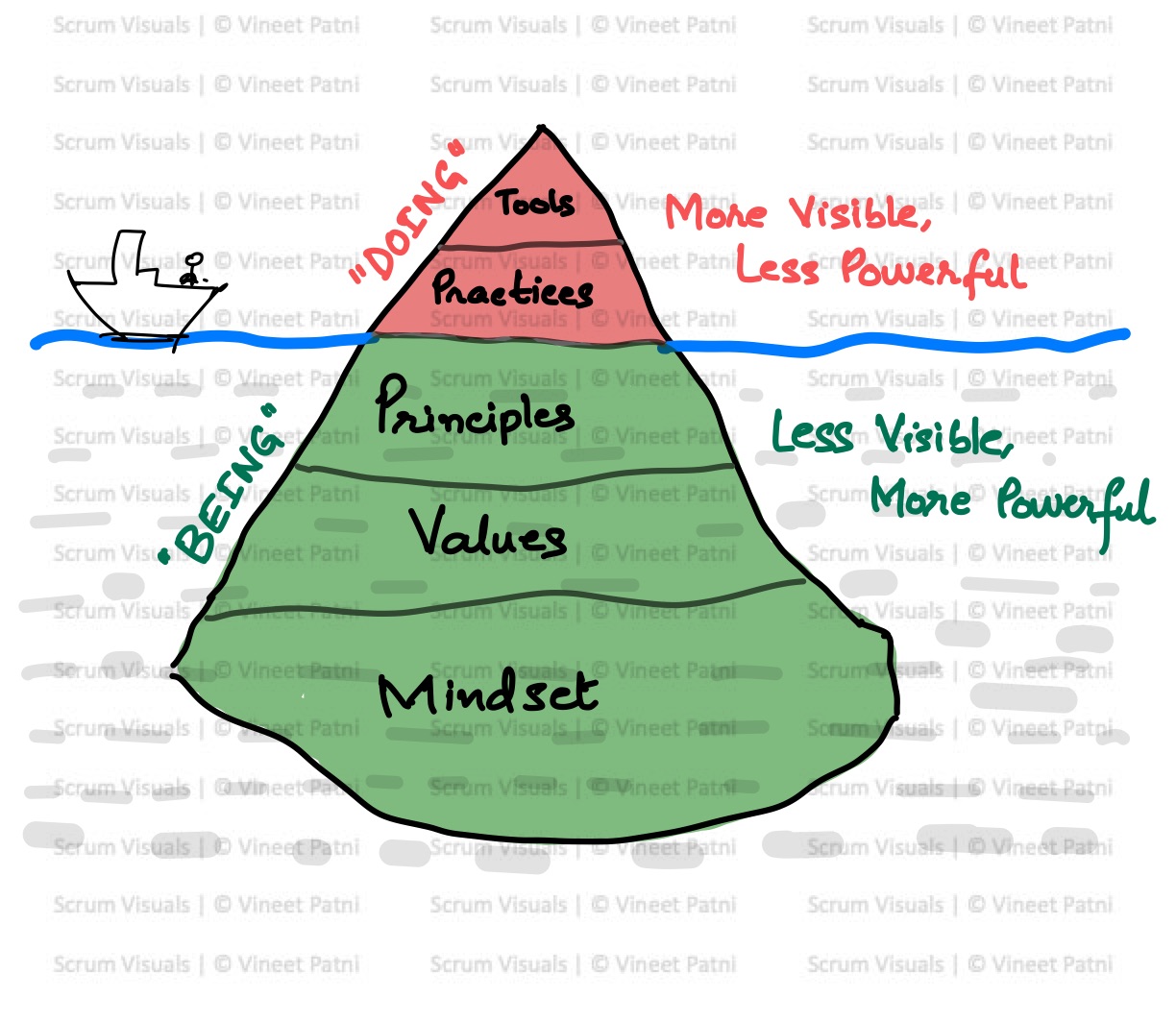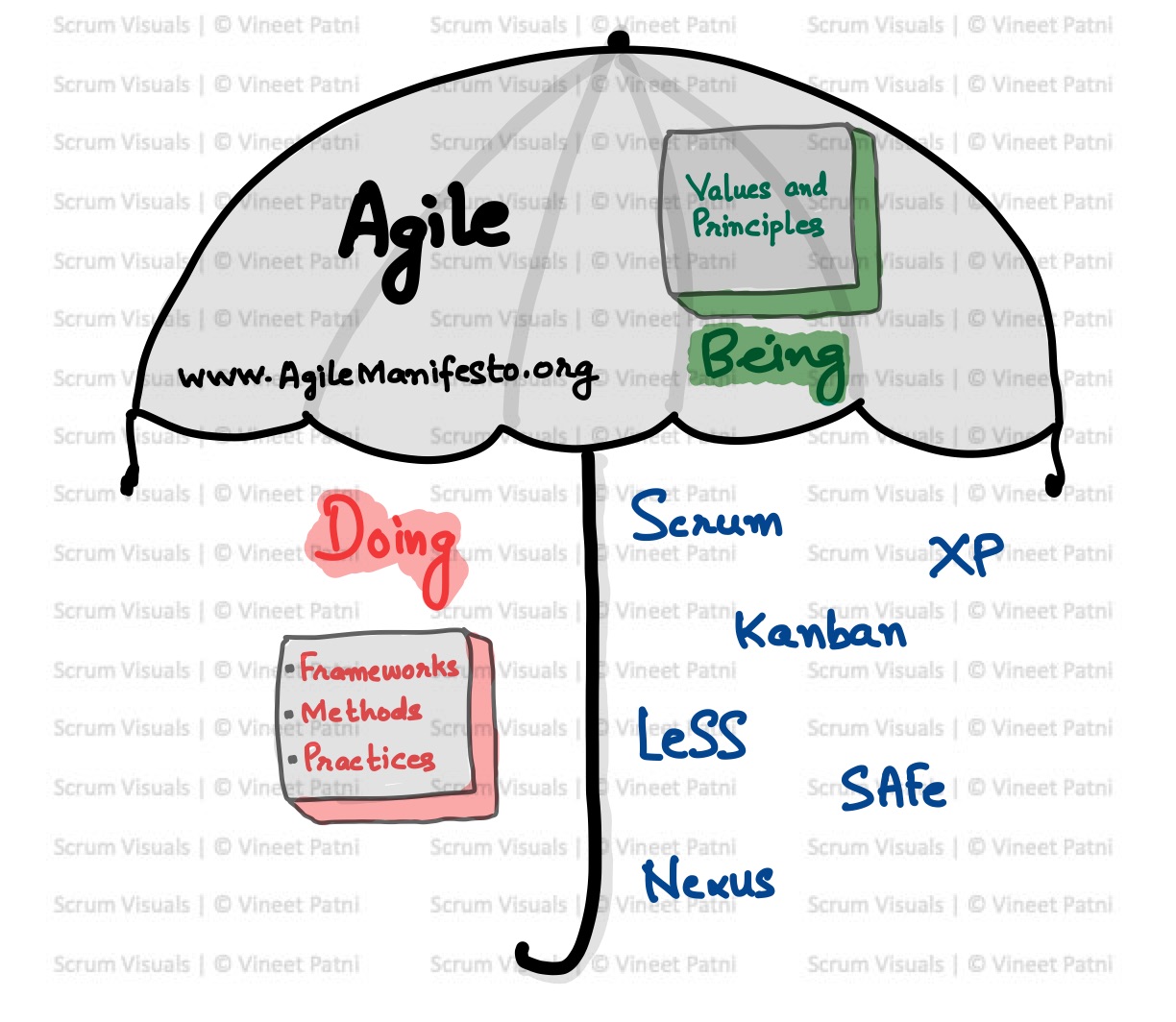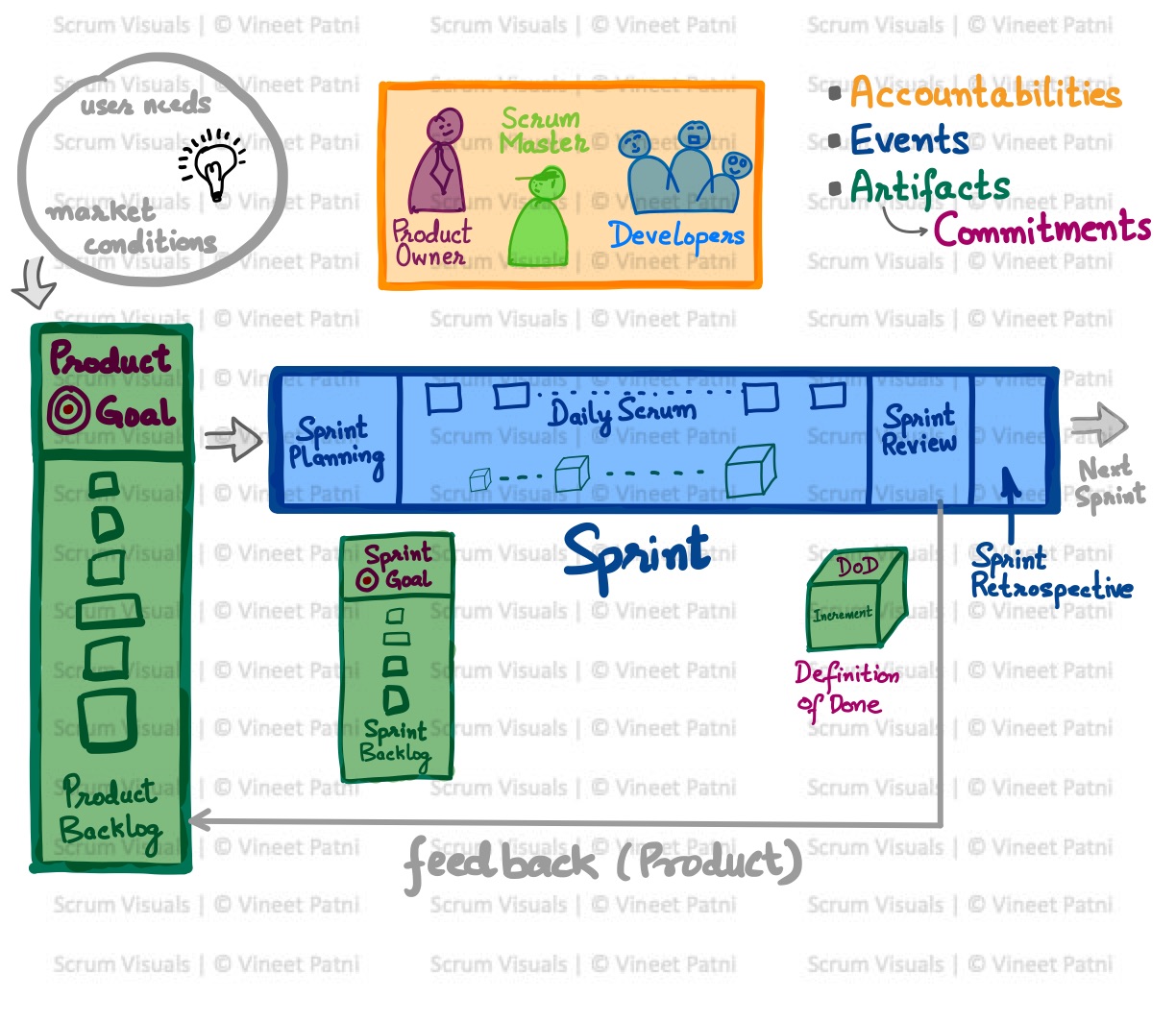Accountabilities in Scrum:
- Product Owner: The product owner represents the stakeholders and is responsible for maximizing the value of the product by creating the Product Backlog, ordering items, and ensuring the team understands the requirements. The product owner orders the backlog items based on market trends, stakeholder inputs, and user feedback.
Importance: The Product owner plays a crucial role in guiding the team’s efforts towards delivering the most valuable features to the customers.
- Scrum Master: The Scrum Master serves as a servant-leader to the Scrum Team, facilitating Scrum events, ensuring impediments are removed, and coaching the team to adopt Scrum principles.
Importance: The Scrum Master ensures that the team follows the Scrum framework effectively, fostering a culture of continuous improvement and collaboration.
- Developers: The Developers consist of professionals who work together to deliver increments of potentially tangible/ viewable products at the end of each Sprint. They are self-organizing and cross-functional, with the necessary skills to complete the work.
Importance: The Developers are responsible for turning Product Backlog items into valuable increments, ensuring high-quality deliverables and customer satisfaction.
Artifacts in Scrum:
- Product Backlog: The Product Backlog is an ordered list of all product requirements, enhancements, fixes, improvements, etc. that need to be implemented in the product. It is managed by the Product Owner and continuously refined to reflect changes in requirements and priorities.
Importance: The Product Backlog serves as the single source of truth for the Scrum Team, guiding their work and ensuring alignment with the product vision and goals.
- Sprint Backlog: The Sprint Backlog is a subset of the Product Backlog items selected for the Sprint. It is owned by the Developers and contains the tasks necessary to achieve the Sprint Goal.
Importance: The Sprint Backlog provides transparency into the work that needs to be done during the Sprint, helping the team stay focused and committed to delivering the Sprint Goal. - Increment: The Increment is the sum of all the Product Backlog items completed during a Sprint, as well as the increments of all previous Sprints. It is the work that is potentially releasable and meets the Definition of Done.
Importance: The Increment demonstrates tangible progress toward the product’s goals, allowing stakeholders to provide feedback and make informed decisions about future iterations.
Commitments in Scrum:
· Each artifact has a commitment of it’s own.
· In Scrum, commitments are vital for transparency and accountability.
The commitments linked to the artifacts are as follows:
1. The product backlog ties to the product goal, defining the product’s objective.
2. The sprint backlog aligns with the sprint goal, outlining desired outcomes.
3. The increment, the sum of completed backlog items, connects to the definition of done, setting quality standards.
These commitments keep teams focused on delivering value and meeting stakeholder expectations.
Events in Scrum:
- Sprint: Sprint is the container event; as the name suggests, it contains multiple small events explained further. A Sprint in Scrum is a time-boxed iteration during which a specific set of work is completed. It is a defined period of time, usually between one to four weeks, in which the Scrum Team works to deliver a potentially usable product increment.
- Sprint Planning: Sprint Planning is a collaborative event where the Scrum Team determines the Sprint Goal and selects the Product Backlog items they will work on during the Sprint. It is time-boxed to a maximum of eight hours for a one-month Sprint.
Importance: Sprint Planning sets the direction for the Sprint, aligning the team around a common goal and providing clarity on what needs to be accomplished.
Who is required to attend the Sprint Planning event?
In the Sprint Planning event, the entire Scrum team, including the Product Owner, Scrum Master, and Developers, must participate to discuss and agree on the work to be accomplished in the sprint.
- Daily Scrum: The Daily Scrum is a short, daily meeting where the Developers synchronize their activities, discuss progress towards the Sprint Goal, and identify any impediments. It is time-boxed to a maximum of 15 minutes.
Importance: The Daily Scrum promotes transparency, communication, and collaboration within the Developers, helping to identify and address issues early.
Who is required to attend the Daily Scrum?
Daily Scrum requires the presence of the Developers to inspect progress and adapt their plan for the next 24 hours. Daily Scrum is for the Developers only. Product Owner and Scrum Master can attend the Daily Scrum as Developers only if they are actively working on items in Sprint Backlog.
- Sprint Review: Sprint Review is held at the end of the Sprint to inspect the Increment and gather stakeholder feedback. During the Sprint Review, the Scrum Team and Stakeholders also discuss market conditions and the future of the product (feedforward). Based on the Stakeholder’s feedback and discussions, the Product Owner updates the Product Backlog as necessary. The Sprint Review is capped at 4 hours for a month-long Sprint. In cases where the Sprint is shorter, the Sprint Review will also be shorter.
Importance: Sprint Review ensures that the Increment meets the stakeholders’ expectations and provides an opportunity to make adjustments based on feedback, maximizing the product’s value.
Who is required to attend the Sprint Review?
The Sprint Review involves the Scrum Team and Stakeholders to review the increment and gather feedback, ensuring transparency and alignment with customer needs.
- Sprint Retrospective: The Sprint Retrospective is the last event of the Sprint. It is a time for the Scrum Team to reflect on their process and identify opportunities for improvement. It is an introspective event focused on inspecting how the Sprint went and adapting accordingly. The Sprint Retrospective is capped at 3 hours for a month-long Sprint. In cases where the Sprint is shorter, the Sprint Retrospective will also be shorter.
Importance: Sprint Retrospective fosters a culture of continuous improvement, empowering the team to address issues and refine their practices, ultimately increasing their effectiveness and productivity.
Who is required to attend the Sprint Retrospective?
Sprint Retrospective brings together the Scrum Team to reflect on their processes and identify improvements for the next sprint.
Why are Scrum Events Mandatory?
- Scrum events are mandatory to ensure that the Scrum Team has regular opportunities to inspect and adapt their process, leading to continuous improvement and increased efficiency.
- By following the Scrum events, the team can maintain transparency, collaboration, and alignment throughout the project, maximizing the chances of delivering a high-quality product that meets the stakeholders’ needs.
- Scrum events provide structure and cadence to the project, helping the team stay focused, motivated, and on track to achieve their goals within the Sprint timeframe.
- Without the Scrum events, there is a risk of losing sight of the project’s objectives, encountering unforeseen challenges, and failing to deliver value to the customers in a timely manner.











